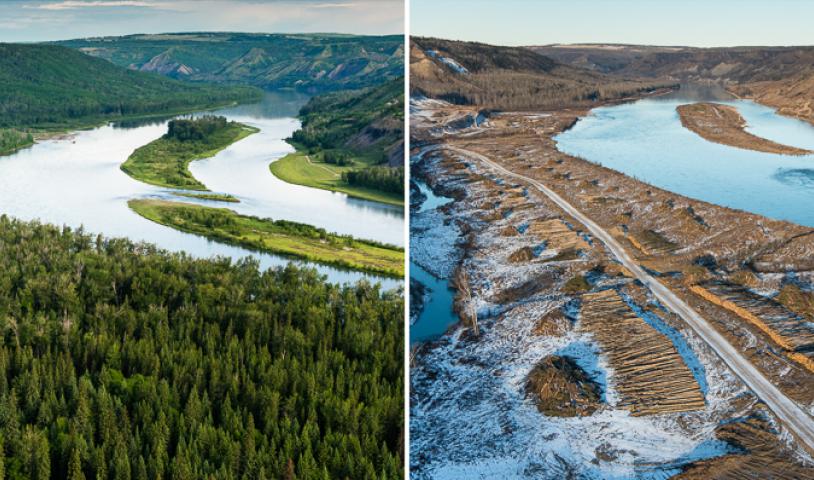New fisheries permits will force Trudeau government's hand on Site C
Tuesday, May 31, 2016
Dam opponents believe fresh round of permits will be first to need new PM’s approval
A new round of federal permits for Site C will steer the Trudeau government into uncharted waters, opponents of the dam say.
For what appears to be the first time, the new government will have to give firm yes or no on the $8.8 billion dam in the form of new fisheries permits required for construction to continue.
Up to now, the federal Liberals have shied away from the Site C question, saying the approval of the initial federal permits was the previous government's decision.
Opponents of the project say the new permits, which are before Fisheries Minister Hunter Tootoo, will be a critical test of the government's promised new relationship with Aboriginal people.
Construction on the project began last summer. Site C will flood 83 kilometres of river valley, including areas sacred to First Nations.
No more 'scapegoating' Stephen Harper
While Site C is a provincial project, it requires permits for areas of federal jurisdiction, including impacts on fisheries, navigable waters and First Nations.
Peace River Valley farmer Ken Boon said the Trudeau government will have to issue additional fisheries permits for the project to continue. As far as he knows, they will be the first issued under the Liberal government.
He added the dam was recently found in breach of provincial environmental permits for failing to control sediment levels in the Peace River.
"Obviously we have a new federal government, so now they have to look at issuing those permits with the mandate they got elected on, their election promises," he said. "They have a lot of leeway in what they can do. They can put a halt on it for now, and do a further review of the permits, or decide not to issue certain permits."
Boon was one of several dam opponents camped out in the path of construction early this year, arguing construction should be halted until First Nations and landowner lawsuits against the project are ruled on.
Opponents like Boon say the dam flies in the face of Trudeau’s “new relationship” with First Nations—two of which are suing the government over the project. But so far, the government has largely been mum on Site C.
Asked about the project in the House of Commons in February, Environment Minister Catherine McKenna avoided even mentioning Site C by name.
"In the fall of 2014, the former government approved the project and set legally binding conditions with which the proponent must comply," McKenna said. "The project is now at construction phase and BC Hydro must meet the requirements set out in the environmental assessment decision as well as other regulatory requirements.
West Moberly First Nation Chief Roland Willson, whose nation is fighting Site C in the courts, said that so far, the Trudeau government has used the previous government as a "scapegoat."
"They've said 'no' to other things the Harper government approved," he told the Alaska Highway News. "This will show what the intent of the government is: if they're going to hold to their word, or if they were just spewing off to get elected."
Fisheries and Oceans Canada did not respond to repeated requests for comment. In an interview with the Hill Times, Tootoo did not say whether his ministry would consider denying permits outright.
“My officials and chief of staff met with representatives from over there. There was information provided, we’re reviewing that information and, you know, part of the application from BC Hydro,” he said. “We’ll follow the process, we’ll be consulting with the indigenous groups over there before any decision is made whether to move forward or not.”
Joe Foy, national campaign director with the Wilderness Committee, said the new permits will be a test for the new government.
"That's going to be another defining moment that shapes the relationship between the federal government and First Nations,” he said, saying First Nations hadn’t been adequately consulted on Site C. “Now we're seeing it as trees are getting knocked down. That's a goofy way to run things, I think.”
Read the original story here
